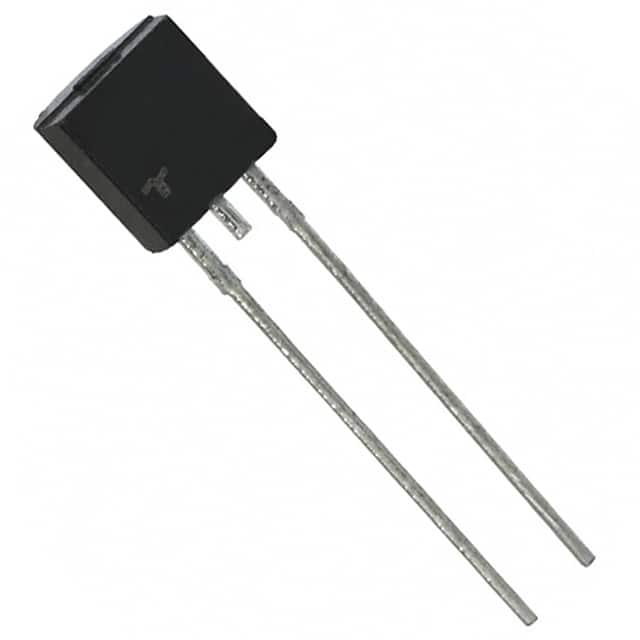Szczegóły produktu można znaleźć w specyfikacjach.

P1100ECMCAP
Product Overview
- Belongs to: Electronic Components
- Category: Capacitor
- Use: Used for energy storage and filtering in electronic circuits.
- Characteristics: High capacitance, low ESR (Equivalent Series Resistance), compact size.
- Package: Surface mount
- Essence: Electrolytic capacitor
- Packaging/Quantity: Typically packaged in reels of 1000 units.
Specifications
- Capacitance: 1000uF
- Voltage Rating: 16V
- Tolerance: ±20%
- Operating Temperature Range: -40°C to +105°C
- Dimensions: 10mm x 10mm x 12mm
Detailed Pin Configuration
- Pin 1: Positive terminal
- Pin 2: Negative terminal
Functional Features
- High capacitance for effective energy storage.
- Low ESR for efficient filtering.
- Compact size for space-constrained applications.
Advantages and Disadvantages
Advantages
- High capacitance allows for effective energy storage.
- Low ESR ensures efficient filtering.
- Compact size saves space on the circuit board.
Disadvantages
- Limited operating temperature range compared to some other capacitor types.
- Tolerance of ±20% may not be suitable for precision applications.
Working Principles
P1100ECMCAP operates based on the principles of electrolytic capacitors, utilizing an electrolyte to achieve high capacitance. When a voltage is applied, it stores energy in the form of an electric field between its plates.
Detailed Application Field Plans
P1100ECMCAP is commonly used in power supply circuits, audio amplifiers, and other electronic devices requiring energy storage and filtering. Its high capacitance and compact size make it suitable for various consumer electronics and industrial applications.
Detailed and Complete Alternative Models
- P1200ECMCAP: 1200uF, 16V, similar characteristics to P1100ECMCAP.
- P1000ECMCAP: 1000uF, 25V, higher voltage rating than P1100ECMCAP.
This information provides a comprehensive overview of the P1100ECMCAP, covering its product details, specifications, functional features, advantages, disadvantages, working principles, application field plans, and alternative models.
Wymień 10 typowych pytań i odpowiedzi związanych z zastosowaniem P1100ECMCAP w rozwiązaniach technicznych
What is P1100ECMCAP?
- P1100ECMCAP is a high-performance, electrically conductive adhesive film designed for electronic assembly applications.
What are the key features of P1100ECMCAP?
- P1100ECMCAP offers excellent electrical conductivity, high thermal stability, and strong adhesion to a variety of substrates.
In what technical solutions can P1100ECMCAP be used?
- P1100ECMCAP is commonly used in bonding electronic components, EMI/RFI shielding, and grounding applications in electronic devices.
How does P1100ECMCAP compare to other conductive adhesives?
- P1100ECMCAP stands out due to its high electrical conductivity, reliability in extreme temperatures, and compatibility with various surfaces.
What substrates is P1100ECMCAP compatible with?
- P1100ECMCAP adheres well to metals, ceramics, glass, and many plastics commonly used in electronic assemblies.
Is P1100ECMCAP suitable for high-temperature applications?
- Yes, P1100ECMCAP exhibits excellent thermal stability, making it suitable for applications exposed to elevated temperatures.
Can P1100ECMCAP be used for flexible electronics?
- Yes, P1100ECMCAP is flexible and can be used in applications involving flexible circuits and electronic components.
Does P1100ECMCAP require special curing conditions?
- P1100ECMCAP typically requires a controlled temperature and pressure environment for curing, as specified by the manufacturer.
Is P1100ECMCAP compliant with industry standards for electronic adhesives?
- Yes, P1100ECMCAP meets industry standards for electrical performance, reliability, and environmental regulations.
What are some best practices for applying P1100ECMCAP in technical solutions?
- It is recommended to carefully clean and prepare the substrate, apply the adhesive evenly, and follow the manufacturer's guidelines for curing and post-processing.

